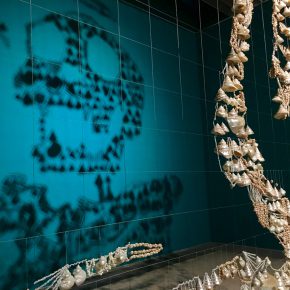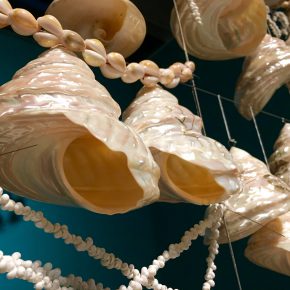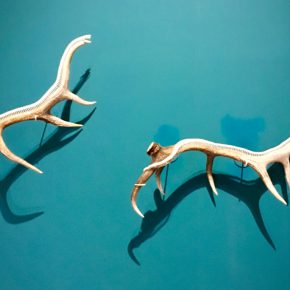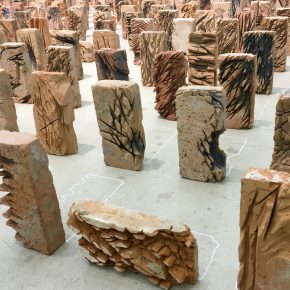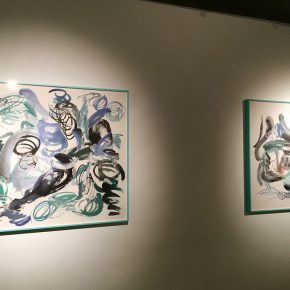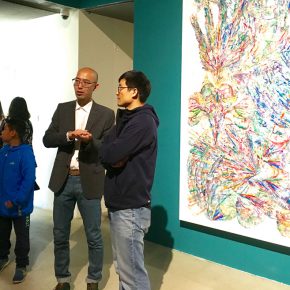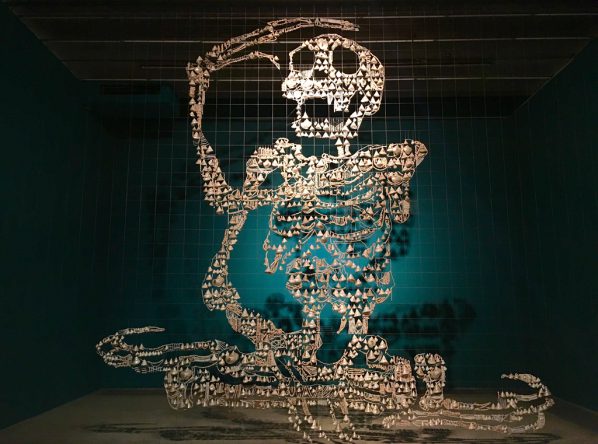
Wu Jian’an has been committed to the combination and transformation between traditional cultural elements and contemporary visual art, a large number of narrative figures of Chinese and Western classical literature, myths and legends, as well as folk tales are represented in his works, and he takes an integrated media approach to question the traditional cultural wisdom, exploring the in-depth influence of tradition on contemporary culture. On May 14, Ten Thousand Things: New Works by Wu Jian’an opened at Chambers Fine Art, through the four groups of key works and many small works he presents the latest art thoughts and experimental results of the artist.
The current exhibition derives its title from the influential book Ten Thousand Things: Module and Mass Production in Chinese Art by the German art historian Lothar Ledderose, who penetrated deeply into the level of Chinese culture and aesthetic concepts to analyze Chinese arts and crafts, such as the investigation into the use of modular or standardized production systems throughout the history of Chinese art, in bronzes, porcelain, and architecture. Lothar Ledderose revealed how Chinese artists produced a selection of artworks in a complex system, which is deeply rooted in a Chinese idea that the universe is composed of all things. It is obvious that Wu’s thinking and creation was inspired by Ledderose’s writing and perceptive commentaries, and the exhibited works also pay attention to and reflect the relationship between the one and the many, the individual and society.
This makes the individual “module”, it both ensures that the individual person is able to function in a fixed social position, while becoming the basis of the whole orderly society and also reveals the conceptual core of Western modern industrial production that stresses the division and pursues efficiency. However, along with the deepening of a democratic awareness and the ideological emancipation brought by social progress, the individual also increasingly emphasizes self-worth and identity, rather than being satisfied with “working on schedule” in the whole social chain, the conflict of the relationship between “the individual and society” is increasingly intensified in contemporary culture, to form a subtle confrontation to the original order. The art of Wu Jian’an starts from the tradition and it takes realities into consideration, to analyze the order of relationship and the existence from the perspective of art.
Like many of his earlier works, the large-scale triptych Ten Thousand Things consists of thousands of small figures cut from paper dipped in wax, the series of paper-cuts was systematically shown at the exhibition “New Interpretation of the ‘Tale of the White Snake’” in 2015, but Wu arranges the individual figures so they are more clearly identified, while they are in loose configurations in the new works, which is different from the previous one. Highlighting the images of individual details, blurring the overall characteristics of the imagery, seems to reveal Wu’s new attitude to the relationship between “the individual and society” in the work.
Big Skeleton is very striking in the galley, under the spotlight a monkey skeleton obviously has a false color, when looking at it closely, the spectator discovers that it is composed of a variety of polished conch shells. Each exquisite example of Nature’s diversity in the creation of identically organized forms which are further individualized with painted faces. In contrast with other works in this exhibition, this accumulation of individualized forms results in the most distinct image of all, a monkey skeleton. In addition, the work of the installation is entitled “Dinosaur” which is also the natural physical heterogeneous composition and forms a unique interpretation of implication, snake bones are affixed to a red deer’s antlers that seem to be branches where the snake crawls, while snake bones are like hairs covering the antlers, the alienation and misunderstanding of property makes the individual and the whole essentially changed.In Shallow Mountain approximately 1500 old bricks are assembled on the gallery floor, each one carved and engraved by hand. Instead of being used as elements in a larger construction, each brick is given an individual identity, creating yet another consideration of the relationship between the individual and a collective identity.
500 Brushstrokes?is Wu’s new trial, first of all, he wrinkled, rubbed and delineated on rice paper with a brush to create a special figure, and then cut? the individual brushstrokes from the sheet of paper and made a collage on another sheet of paper. Each stroke is individual and they form a new abstract image when they are reassembled. The form that emerges is not recognizable as a distinct image but rather as an unique whole.It is the 5th exhibition at Chambers Fine Art for Wu Jian’an, and the exhibition remains on view till July 3.
Text and photo by Zhang Wenzhi, translated by Chen Peihua and edited by Sue/CAFA ART INFO


